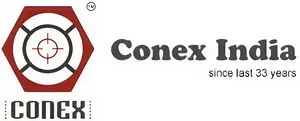


Essential Electrical Connectors and Components for Power Distribution
In the world of electrical power distribution, having the right connectors and components is crucial for ensuring safety, efficiency, and reliability. This blog post will explore various essential electrical connectors and components, their applications, and benefits. Whether you’re working on a large-scale power distribution project or a smaller electrical installation, understanding these components is key to making informed decisions.
1. Bronze Electrical Connectors
Bronze electrical connectors are a popular choice in the power industry due to their excellent combination of properties.
Key Features:
- High conductivity
- Excellent corrosion resistance
- Durable and long-lasting
- Suitable for high-current applications
Applications:
- Substations
- Switchgear
- Outdoor electrical installations
Bronze connectors are particularly valuable in coastal areas or industrial environments where corrosion resistance is crucial.
2. Transformer Spade Terminals
Transformer spade connectors and Transformer spade terminals are essential components in electrical systems, providing a secure connection point for transformers.
Key Features:
- Flat, fork-like shape for easy installation
- Available in various sizes to accommodate different wire gauges
- Often made from copper or brass for excellent conductivity
Applications:
- Connecting wires to transformer terminals
- Industrial control panels
- HVAC systems
Spade terminals ensure a reliable connection and make maintenance and replacement easier.
3. Hotline Clamps
Hotline clamps Bronze Hotline clamps are specialized connectors designed for use in live-line work on power transmission and distribution systems.
Key Features:
- Designed for installation on energized lines
- High-strength materials for secure connections
- Often feature corrosion-resistant coatings
Applications:
- Temporary connections during maintenance
- Emergency repairs on power lines
- Bypassing faulty equipment
Hotline clamps allow utilities to perform critical maintenance without interrupting power supply to customers.
4. Aluminum Mechanical Connectors Aluminium Mechanical Lugs
Aluminum mechanical connectors Aluminum Mechanical Lugs Connectors offer a lightweight and cost-effective solution for electrical connections.
Key Features:
- Lightweight compared to copper or bronze
- Good conductivity
- Corrosion-resistant (when properly treated)
- Cost-effective for large-scale installations
Applications:
- Overhead transmission lines
- Distribution networks
- Solar panel installations
While not as conductive as copper, aluminum connectors are an excellent choice for many applications due to their lower cost and weight.
5. Copper Neutral Bars Aluminium Neutral bars
Neutral bars, also known as neutral bus bars, are essential components in electrical panels and distribution boards.
Key Features:
- Multiple connection points for neutral wires
- Often made of tin-plated copper for excellent conductivity
- Available in various sizes to fit different panel configurations
Applications:
- Electrical panels
- Distribution boards
- Load centers
Neutral bars ensure proper grounding and return path for electrical circuits, maintaining safety and system balance.
6. Copper Grounding Lugs
Copper grounding lugs are critical components for establishing safe and effective grounding connections.
Key Features:
- High conductivity
- Corrosion-resistant
- Available in various sizes and configurations
- Often UL listed for safety compliance
Applications:
- Equipment grounding
- Lightning protection systems
- Electrical service entrances
Proper grounding is essential for electrical safety, and copper grounding lugs provide a reliable connection point for grounding conductors.
7. Copper Grounding Bars
Copper grounding bars serve as a central point for connecting multiple ground wires in an electrical system.
Key Features:
- High current-carrying capacity
- Multiple connection points
- Durable and long-lasting
- Often pre-drilled for easy installation
Applications:
- Main grounding systems in buildings
- Industrial electrical installations
- Telecommunications equipment
Grounding bars ensure that all parts of an electrical system are properly grounded, reducing the risk of electric shock and equipment damage.
8. Copper Neutral Bars
Copper neutral bars are similar to grounding bars but specifically designed for neutral connections in electrical systems. We also offer Aluminium Neutral bars Grounding bars for panel boards.
Key Features:
- High conductivity of copper
- Multiple connection points for neutral wires
- Often insulated from the enclosure
- Available in various sizes for different applications
Applications:
- Electrical panels
- Switchboards
- Motor control centers
Copper neutral bars provide a central point for connecting all neutral wires, ensuring proper current return and system balance.
Conclusion
Each of these electrical connectors and components plays a crucial role in creating safe, efficient, and reliable electrical systems. When selecting components for your project, consider factors such as:
- The specific application and environment
- Required current-carrying capacity
- Compatibility with existing systems
- Long-term maintenance needs
- Cost-effectiveness over the system’s lifetime
By choosing the right components and ensuring proper installation, you can build electrical systems that perform optimally and stand the test of time. Always consult with a qualified electrical engineer or contractor when designing and implementing electrical systems to ensure compliance with local codes and safety standards.





